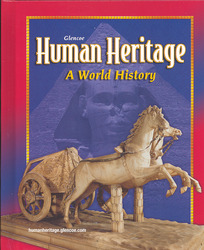
Human Heritage: A World HistoryChapter 8: Africa and the AmericasAfrica and the AmericasChapter 8 explores the civilizations that grew up in Africa and in the Americas. These civilizations are described as being of two kinds. One kind was interested in trade and ideas. The other was interested in war. Section 1 explains how the ancient African civilizations of Kush and Aksum passed along elements of their culture. Ancient Kush was located south of Egypt on the Nile River. Conquered first by the Egyptians and later by the Assyrians, Kushites learned much from both cultures. As Kush declined, another kingdom, Aksum, rose to take its place. Like Kush, Aksum was a trading country. Section 2 deals with the West African trading kingdoms of Ghana, Mali, and Songhai. The trade of these empires was based on gold, salt, and other goods. Section 3 covers the rise of two trading kingdoms and city-states in East Africa. The Bantu-speaking Shona set up a trading kingdom in Zimbabwe after a population explosion in their homeland forced them to find new homes. Kilwa and other coastal cities handled trade between Africa and Arabia, Persia, India, and China. Section 4 discusses the migration of hunting-and-food-gathering people to the Americas about 25,000 years ago. Over time, people spread out over the Americas. Farming villages developed as people needed to find new ways of getting food. Section 5 focuses on the early civilizations of Mesoamerica. The Olmecs developed cities, hieroglyphic writing, and a calendar. The Maya were great traders, mathematicians, and astronomers. A warlike people, the Aztec ruled central Mexico until they lost their empire to the Spaniards. Section 6 covers the huge, wealthy empire of the Inca and describes the Inca way of life. The Inca controlled their empire through a common religion, language, and system of roads. |  |















